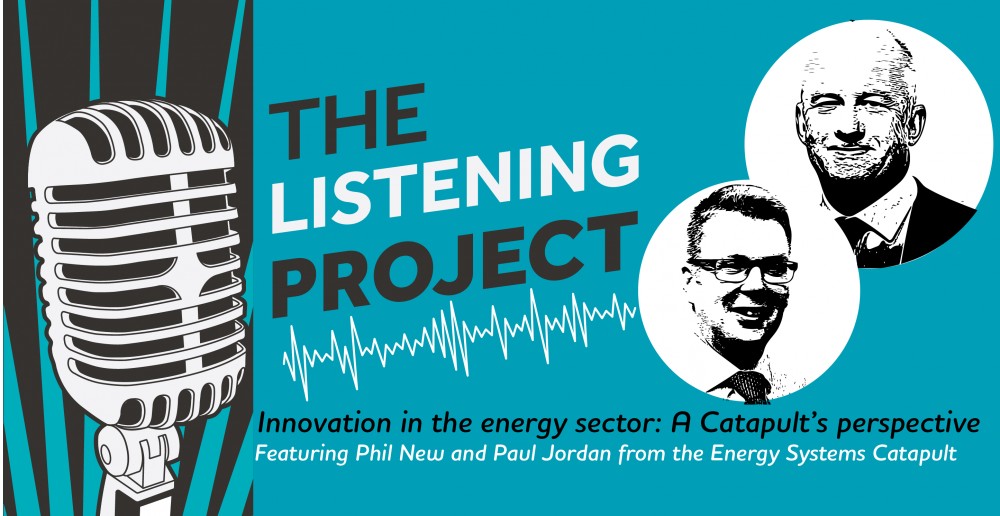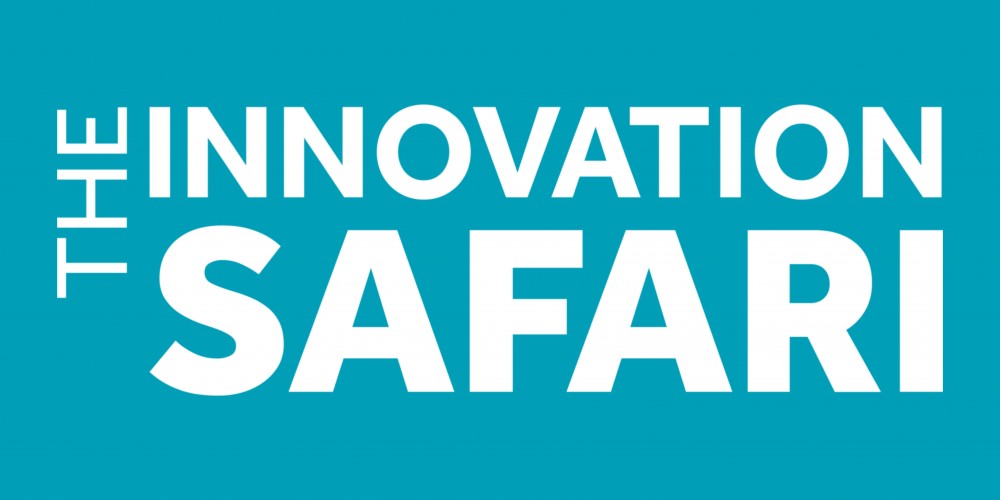EIC’s Community Innovation Lead, Liam Bolton, sat down with Phil New, CEO, and Paul Jordan, Business Leader, Innovation Support and International, from the Energy Systems Catapult to discuss all things utilities and innovation. From the ins and outs of the ESC to emerging technologies in the industry, they provide a valuable insight into the sector.
Q. Could you tell us a bit about the Energy Systems Catapult, your role in the sector and how you operate?
Phil New: The Energy Systems Catapult is a private company but it’s not-for profit and receives a fair amount of government funding. Our job, strictly speaking, is to help innovators navigate the pathway from a bright idea to business as usual. The issue that we’ve found is that, in the energy sector, that pathway is quite difficult to find. There’s a lot of work that needs to be done with innovators, and also with strategic investors, regulators, policymakers and others parties, to try and identify where the critical obstacles to innovation are. We then need to do what we can to either give people pathways around it, or actually to remove these obstacles altogether. Catapult is developing a set of assets and capabilities with this goal in mind. We’re doing things that the government might like to do but can’t, but that the private sector just won’t do, as there isn’t a commercial incentive to try and help give people the confidence to think differently about what needs to happen in the sector, and allow innovation to thrive.
Paul Jordan: In that respect I’m quite fortunate that in my role, which is innovator support and international, I really delve into some of the tactics behind how we deploy that. We have a range of roles within the Catapult that are taking the great, strategic-thought leadership work that we do, as well as the assets and tools and models and capabilities that we’re creating, to market. I do that in the context of helping innovators directly. We have our incubation accelerator and work with the EIC around a broad range of standards – a suite of things that we can do for innovators directly but also internationally. This is because, if we’re helping innovators, we not only want them to benefit from the opportunities within the UK, but we also want to link them to opportunities overseas. My role is about trying to take that big strategic context and bring it down to the more tactical level; actually deploying it within real companies and in real projects both domestically and internationally.
Q. How important do you see the GB energy sector to the wider UK economy?
PN: It’s almost a statement of the blindingly obvious that the energy sector is absolutely critical to the wider UK economy. Without a strong energy sector, that’s not only able to deliver on decarbonisation but continues to deliver on resilience, security and affordability, the economy is going to be in a much worse state than it is at the moment. The UK energy sector has the potential to underpin economic growth- in fact it should be a driver of growth and economic security for the country as a whole, so it’s absolutely fundamental. A strong UK economy without a strong energy sector is unimaginable.
PJ: Yeah, quite right, and I think the only thing I would add to that is the international opportunities that come with it. This is not only fundamental to the UK’s economy and from a domestic standpoint, but there are also massive opportunities for the UK to grow and opportunities for international export, which means we can benefit from that wider global economy as well.
Q. What advice would you give to those hoping to innovate within the energy sector?
PJ: The key thing here is the change that we’re seeing within the energy space right now, as innovation is very much driven by the consumer. I think, for anybody looking to innovate in this sector, it’s not sufficient to just purely think about having a good idea. You’ve now got to think about that good idea within the context of the consumer and how they are going to effectively buy that solution in the future. This means we need to start thinking more about how new service propositions link in with good ideas and innovations. Any innovator is going to need to be able to navigate that future landscape, and that’s exactly where the Energy Systems Catapult can help.
PN: Well, that’s the ESC working in partnership with EIC, of course. There’s a range of tools, publications and online resources that have been put out there to try and help innovators navigate the, sometimes quite alarming, complexity of the sector. I would like to reinforce the fundamental importance of innovation to the future of the sector. I think that many of us would say that we’re confronting a once in a generation chance to transform the sector. The drivers are coming from above in terms of the push to decarbonise, but they’re actually coming from across society as well with what’s happened with digitalisation and the changing relationship that communities and individuals have with institutions. The time is ripe and the need is great for innovation. It’s got to be a two way relationship. The sector has got to figure out what more it can do to support and encourage innovators, whilst innovators themselves need to figure out how best they can engage with the sector.
PJ: I think that the interesting thing is that we’re seeing it already. The way in which electric vehicles are changing the structure of the industry and dynamics within the industry - it’s moving forward at such a pace. However at the same time, the automotive industry and the electricity industry are coming together to find new solutions for that and we’re seeing that the UK can then benefit from these collaborations.
PN: Actually, that’s a brilliant point! The energy sector has grown up being quite introspective and introverted. It’s been highly siloed and it’s developed around rules, institutions and ways of being that have been very much about energy and not as outward-looking as they could be. With everything that’s changing around us, we’re seeing that the boundaries of the energy system are expanding all the time and these boundaries are getting more and more porous. If we just take your example of what’s happening with electrification of transport, you can see new rules of the game being introduced by actors that haven’t traditionally engaged with the core of the energy sector. So the question is: are people going to do what their car company tells them to do, or are they going to do what their utility company tells them to do? It’s an interesting and big question. The future’s absolutely up for grabs.
PJ: You’ve just got me thinking there as well. Going back to the question around what innovators should do- if you think about topics like vehicle to grid, that’s a massive opportunity for the sector and for innovation. But, unless you consider how you factor that into the new commercial proposition, business models and market mechanisms, you’re not going to be successful. Any innovator coming through really needs to think about that wider context we just talked about and the commercial business model, and how you could drive a new solution through in that sort of context.
Q. What are the key emerging trends and technologies in the sector, and how should SMEs be looking to innovate?
PJ: From Catapult’s standpoint, we tend to focus on trends around digitalisation opportunities. We see tremendous opportunities linking to the need for the creation of markets to do with flexibility, particularly within the domestic area, ‘behind the meter’ so to speak. If you can tap into these opportunities, whether it’s energy efficiency or flexibility around energy management in the home, these solutions can then aggregate and link up to opportunities surrounding network optimisation and the benefits that come from having a smarter system. Within that area, there’s a whole host of opportunities around demand side response, demand side management and active network management, such as linking into electric vehicles and vehicle to grid etc. These digital energy opportunities are huge, and a large emerging opportunity for the UK.
PN: I think it’s also important to consider the external drivers of these emerging trends. We’ve just seen the Intergovernmental Panel on Climate Change (IPCC) report and we’re also seeing an increasing amount of attention being paid to the challenges of transitioning to a net zero carbon economy. This decarbonisation trend, already very strong and very real, is only going to get more intense as time goes on. Another emerging trend is the role of the consumer in the future shape of the system. For the last 40 or 50 years, we’ve had an energy system that’s been remarkably effective. It’s done a brilliant job. It’s been very system-centric, and the end user has arguably had a sort of demand function. There’s now increasing evidence that the end user is going to become the actor that drives the system. Rather than trying to encourage the end user to do what the system best needs, in the future the system may need to respond to what millions of end users are saying they want to do. This idea of having a consumer end user responsive energy system will be a growing trend that asks very real and challenging questions of the whole design of today’s system including the rules by which it operates and the technologies that are deployed throughout it.
PJ: Yeah, we could even look at that in terms of some sort of examples. Take for instance a typical freezer, just to try and contextualise this: we know that you could switch off a freezer or a fridge for a period of time, whether that’s five or ten minutes, without any real effect on the end user experience. That’s quite interesting in its own right but if you start to aggregate that up across millions of households you have a powerful level of flexibility in the system that you can now use for other activities. Now, if you overlay on top of that some new innovation, maybe in terms of how you manage that and how you create digital platforms to bring consumers together, then maybe overlay on top of that some new service propositions and also link that into some new opportunities around billing (whether that’s Blockchain), all these sorts of things that come forward. And maybe you then link that into network operators and how they align that to the physical assets, whether that’s substations and cables and pipes and wires etc. You now have a whole host of new innovation, opportunities, companies, businesses, improved outcomes for the end user, and that is clearly an emerging sort of set of opportunities that the UK’s now driving forward.
PN: But of course, I mean, that’s a compelling engineering vision, alright? But before anyone comes in and messes with my freezer or my car or my life in any way, I need them to earn my trust and my confidence, and I’ve got to feel very comfortable and up for this. I’m not necessarily clear that the genius engineers who have historically run and managed and designed this system are best equipped to understand what it’s going take for me to surrender control of my life in the way that is implicit if that vision is to be realised. So, what’s really interesting here then becomes the interdisciplinary and multidisciplinary challenge of bringing a whole range of new skills into the system to enable some of these outcomes to be delivered.
PJ: Yeah, quite right. In fact what you sort of need really is something like a catapult, don’t you?
PN: You might say!









